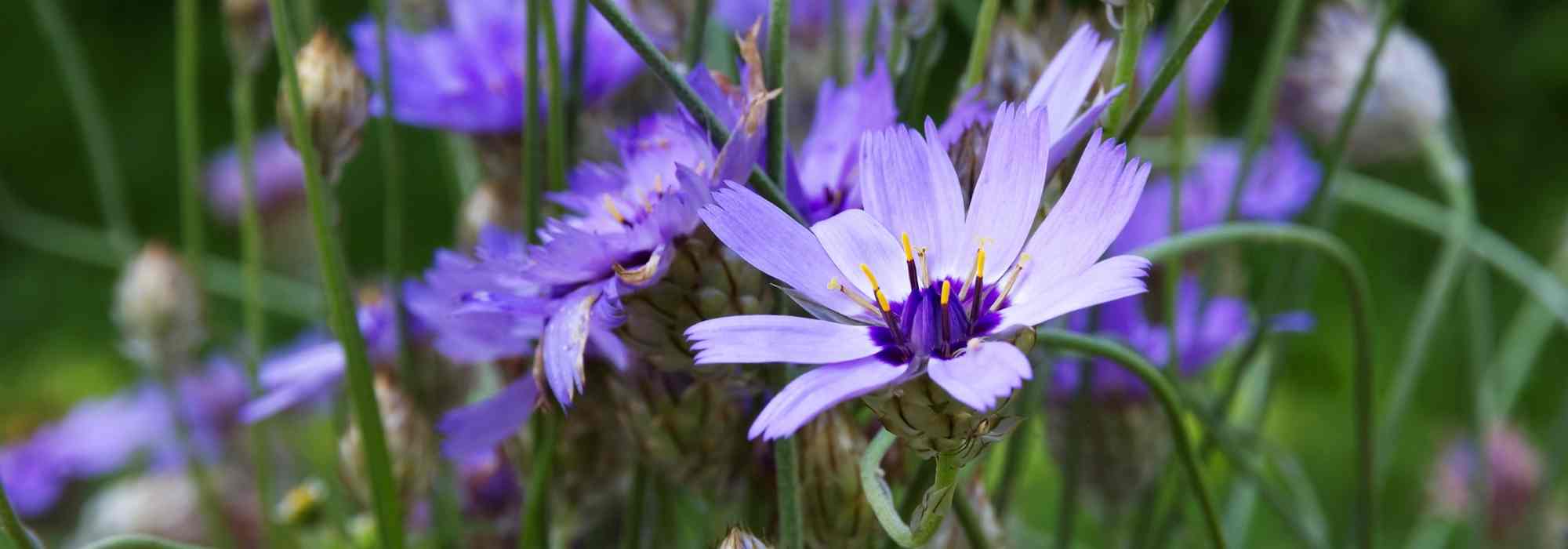
Catananche, Cupid's dart: planting, growing, care
Contents
Catananche in a nutshell
- Catananche, or Cupid’s dart, is a perennial evergreen, thriving in well-drained, dry soils and full sun, and it shows good drought resistance.
- With a rustic appearance, it grows in all types of terrain, with a preference for calcareous soils.
- Its lovely summer flowering comes in various shades of white, blue, and lavender, and its flowers are perfect for fresh or dried cut flower arrangements.
- Fast-growing, less prone to diseases, and resistant to sea spray, it also displays good hardiness.
The word from our expert
Catananche, or Cupid’s dart, is a Mediterranean perennial with a natural, rustic appearance. Among the few species that characterise this genus, only Catananche caerulea is cultivated in gardens. It is , most often blue or white.
The flowers are borne on long stems, about 60 cm tall, which emerge from a tuft of fine evergreen leaves, bluish-green, and slightly fuzzy to the touch.
Its star-shaped flowers with a paper-like texture and silver bracts make it a highly valued plant for creating bouquets, both fresh and dried.
Easy to grow and fast-growing, it is resistant to drought, sea spray, diseases, and heat, although its long stems may bend in the wind.
Fast-growing, its only true enemy is winter moisture, which can cause it to disappear after a few years. In contrast, it thrives and self-seeds spontaneously in well-drained, light soil, and can endure temperatures as low as -15°C. Highly adaptable, it accepts calcareous to more acidic soils, as long as it is in full sun and has good drainage.
To all these qualities, minimal maintenance adds to its appeal, making it an ideal perennial for contemplative gardeners and country gardens.
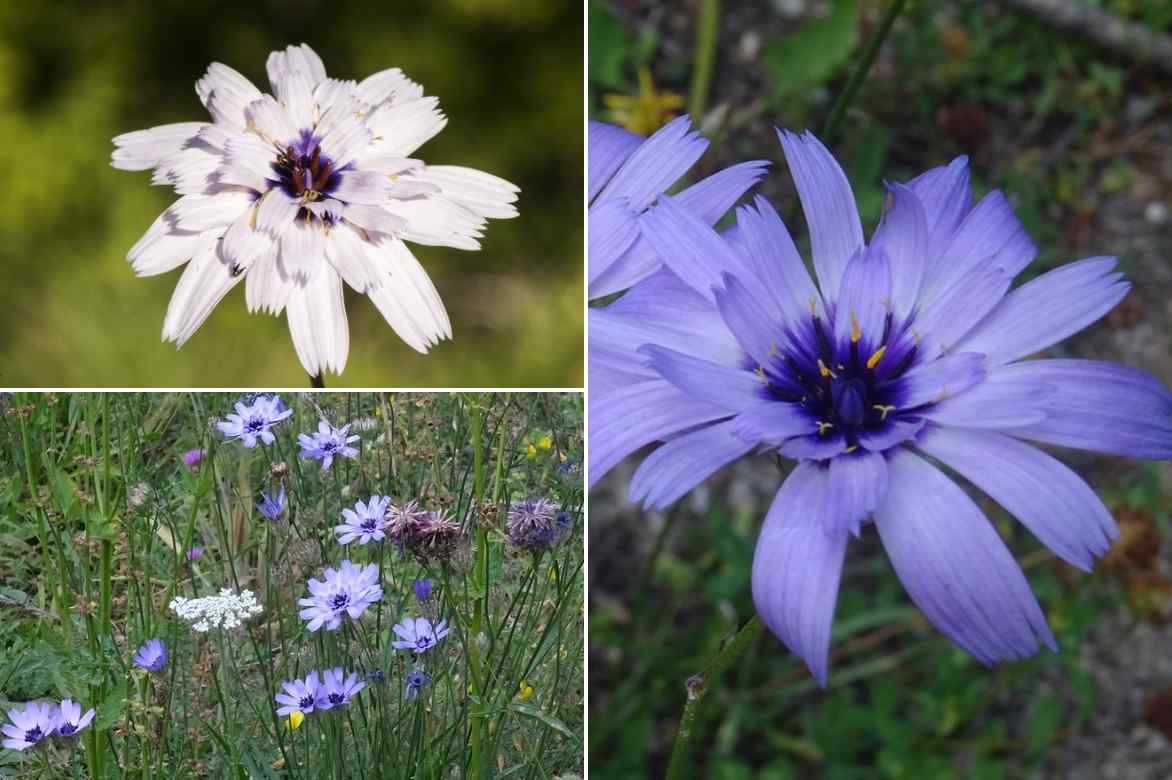
Description and botany
Botanical data
- Latin name Catananche caerulea
- Family Compositae (Asteraceae)
- Common name Cupid's dart
- Flowering Summer (June to August)
- Height 60 to 70 cm x 30 cm
- Exposure sun, partial shade
- Soil type Any well-drained soil
- Hardiness good (-15°C)
Catananche (or Cupid’s dart) is a perennial from the Asteraceae family (or Compositae), just like Aster, Dandelion, Marigold, or Tarragon.
The genus includes 5 species of annuals or perennials, among which are Catananche arenaria, Catananche caespitosa, Catananche montana, and Catananche lutea, but only Catananche caerulea is cultivated in gardens.
Catananche is native to the Mediterranean region, and grows spontaneously in well-drained soils, such as fallow land, dry meadows, slopes, scrublands, or along paths, up to altitudes of 1500 to 1700 meters.
Its Latin name comes from the Greek Katanànkhê, meaning “that which compels to love.” It was believed to have special properties used to create love potions. Its common name, Cupid’s dart, retains this reference to romantic feelings. In southern France, it is sometimes nicknamed ‘cigale’ (or ‘cigalou’, ‘cigalon’…), due to the rustling sound produced by its flower buds when crushed between fingers, reminiscent of the sound of the insect’s wings.
Sometimes used as an annual or biennial, this fast-growing perennial can indeed have a limited lifespan, especially when planted in heavy, waterlogged soil in winter, which can lead to severe and prolonged frosts. In good growing conditions (perfectly drained soil), Cupid’s dart is hardy down to -15°C and can thrive and self-seed.
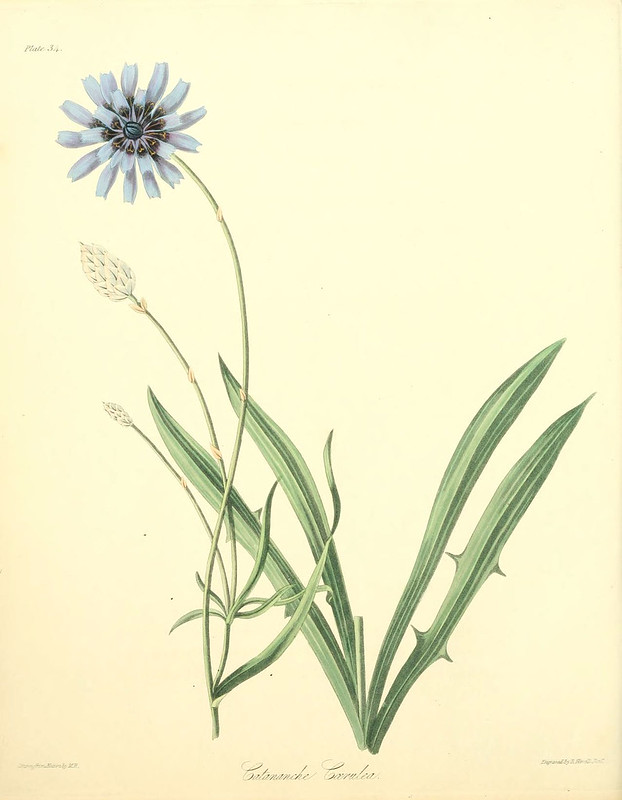
Catananche caerulea, Botanical plate, 1829, R. Havell
This lovely perennial, easy to grow and not prone to diseases, forms a dense tuft of grey-green, basal leaves, which are persistent to semi-persistent, elongated and very fine, with a slightly downy touch.
Fast-growing, the Catananche flowers in summer, between June and August depending on the climate. While some species have white flowers (Catananche arenaria) or yellow (Catananche caespitosa), the ornamental varieties available commercially display various shades of blue or white (Catananche caerulea).
The flowers, reminiscent of cornflower blooms, are borne in solitary heads measuring 3 to 4 cm in diameter. They are held atop long naked stems, and surrounded by silver, paper-thin bracts. The fused petals, known as ligules, are divided into 5 lobes. Lavender blue with a purple heart in Catananche caerulea, they are white with a purple centre in Catananche caerulea ‘Alba’. Catananche caerulea ‘Bicolor’ features a fully double flower, randomly speckled white and blue, around a darker centre. Slightly larger flowers are available in shades of white (Catananche ‘Armor White’) or blue (Catananche ‘Armor Blue’). Catananche ‘Perry’s White’ displays white petals on a cream centre, and Catananche ‘Major’ is lavender blue with a darker heart.
When in bloom, cupid’s dart typically reaches 60 cm in height with a spread of 30 cm.
Easy to grow in any well-drained soil, and with a rustic, natural appearance, it is an ideal plant for holiday gardens, requiring very little maintenance. Not very susceptible to diseases, and resistant to sea spray, it may occasionally be affected by powdery mildew, but this does not compromise the plant’s future.
Well-suited for arrangements, the flowers of the Catananche dry beautifully, making them highly valued in the making of lasting dried bouquets.
Read also
How to create a gravel garden?The different varieties of Catananche
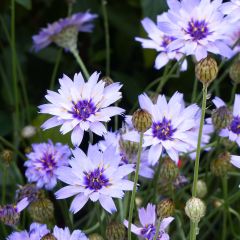
Catananche caerulea
- Flowering time July, August
- Height at maturity 55 cm
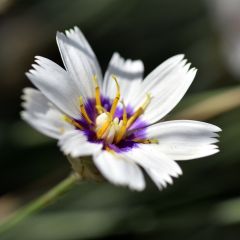
Catananche caerulea Alba
- Flowering time July, August
- Height at maturity 55 cm
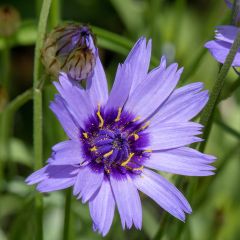
Catananche caerulea Amor Blue
- Flowering time September to November
- Height at maturity 55 cm
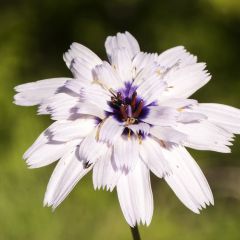
Catananche caerulea Bicolor
- Flowering time July to September
- Height at maturity 70 cm
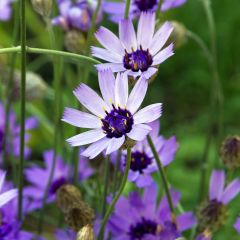
Catananche caerulea Amor Blue/White - Cupids dart seeds
- Flowering time June to September
- Height at maturity 55 cm
Discover other Catananche
View all →Available in 1 sizes
Available in 2 sizes
Available in 1 sizes
Available in 1 sizes
Available in 1 sizes
Planting Catananche
Where to plant?
Catananche is a perennial that loves warmth, sunshine (possibly partial shade) and well-drained soils. It prefers calcareous soils but can also grow in neutral or acidic soils. Although it thrives in light soils (where it self-seeds), it can be cultivated in heavier ground, but its lifespan will be limited.
Its undemanding nature and drought resistance make it an excellent choice for difficult slopes and dry meadows. It can also find a place in gravel gardens, naturalistic borders, or in rockeries, as long as it benefits from good drainage and adequate sunlight.
Avoid overly windy situations, as this may cause its flower stems to bend.
Catananche is also suitable for pot cultivation, allowing for a change of scenery in the garden at will, or to enjoy its beautiful flowering on a terrace or balcony.
Catananche prefers calcareous soils, and it can also be planted in pots.
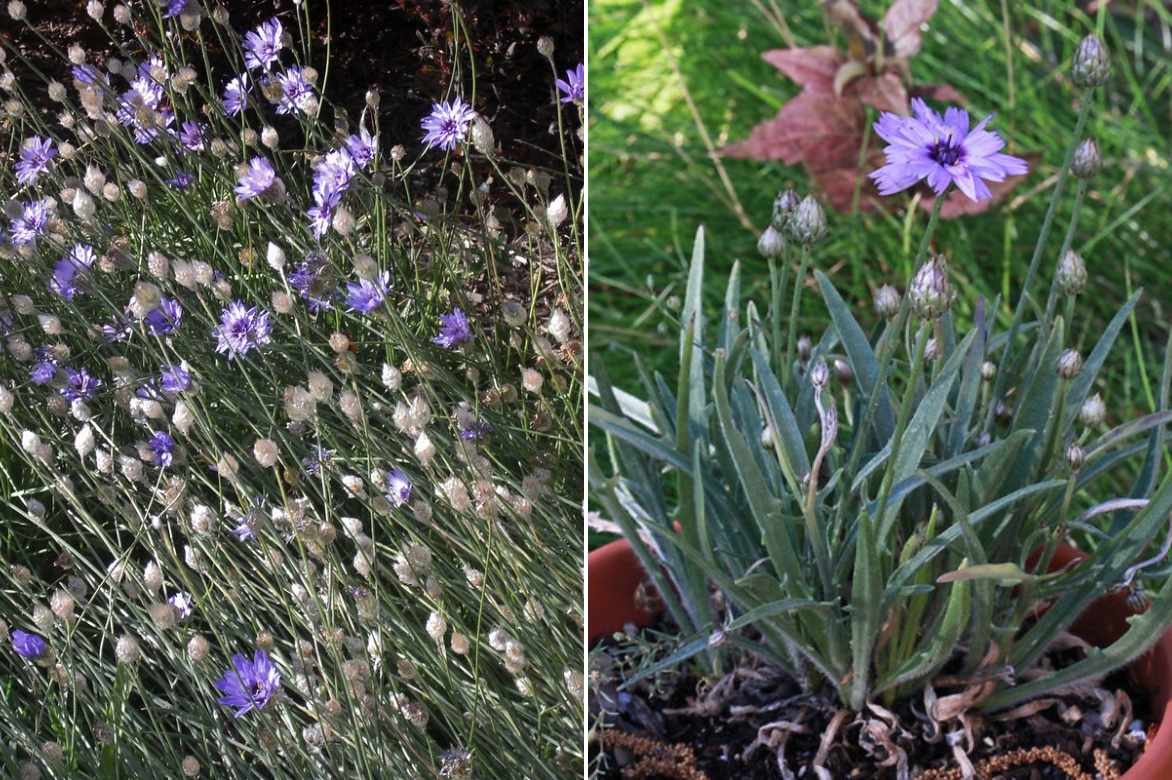 Catananche thrives in calcareous soils and sunny locations; it can also be planted in pots.
Catananche thrives in calcareous soils and sunny locations; it can also be planted in pots.
When to plant?
The ideal planting period is autumn or early spring. Sowing can be done easily in April, directly in place, or a few weeks earlier under cover.
How to plant?
Planting in open ground:
- Soak the pot in a bucket of water for several minutes to thoroughly moisten the substrate.
- Meanwhile, dig a hole approximately twice the size of the container, and loosen the soil.
- In heavy soil, improve drainage with coarse sand, gravel, or pumice. You can place a layer at the bottom of the hole and mix some with the extracted soil.
- Remove your plant from the pot and position it so that the collar (the junction between foliage and roots) is level with the soil surface.
- Fill in with the remaining soil or your mix and lightly firm it down with your fist, ensuring the collar remains well positioned.
- Mulch the base. As Catananche does not appreciate stagnant moisture, use a mineral mulch (gravel, pumice, slate petals, etc.) that drains water quickly and retains heat to release later.
→ For a beautiful mass effect, plant several young plants, spacing them about 30 cm apart, preferably in a staggered arrangement for a more natural look.
Pot planting:
- Choose a pot of at least 30 cm in all dimensions, with a drainage hole.
- Place a drainage layer at the bottom (clay balls, gravel, pumice, etc.) about 3 to 5 cm thick.
- Fill with potting soil or garden soil if the latter is light enough. If necessary, mix in a handful of compost and one or two handfuls of gravel with your substrate.
- After soaking the root ball for a few minutes, remove it from the pot, then place it in the centre of the pot.
- Top up with your substrate to the top of the root ball, without burying the collar (the junction of foliage and roots).
- Mulch to about 3 cm thick, then water thoroughly. The potting soil should be evenly soaked.
- Afterwards, allow the potting soil to dry between waterings.
Care and maintenance of Catananche
General maintenance
- Catananche is a perennial that requires very little maintenance.
- You can cut its fresh flowers or dry them to create cut flower arrangements, but if you want it to self-seed, wait until they are completely faded before removing them. Cutting the spent stems encourages the plant to produce new flowers. Be sure to cut the flower stems at their base.
- Regularly check the mulch at the base. Weeding and replenishing it as needed.
- To rejuvenate the clumps, divide them in early spring, before flowering.
- Catananche is very drought-resistant, but occasional watering during prolonged dry spells and extreme heat can help support its flowering. If grown in a pot, you will need to be more vigilant and regular watering will be necessary.
- If your plant is not situated in a sufficiently sheltered spot from the wind, some staking may be necessary, otherwise the flower stems may flop over.
Potential diseases and problems
Catananche is not very susceptible to diseases. In hot, dry weather, and in a confined environment, powdery mildew may appear, a white coating covering the foliage or flower buds. While harmless to the plant, the concern is primarily aesthetic. To learn how to recognise and treat powdery mildew, please consult our guide.
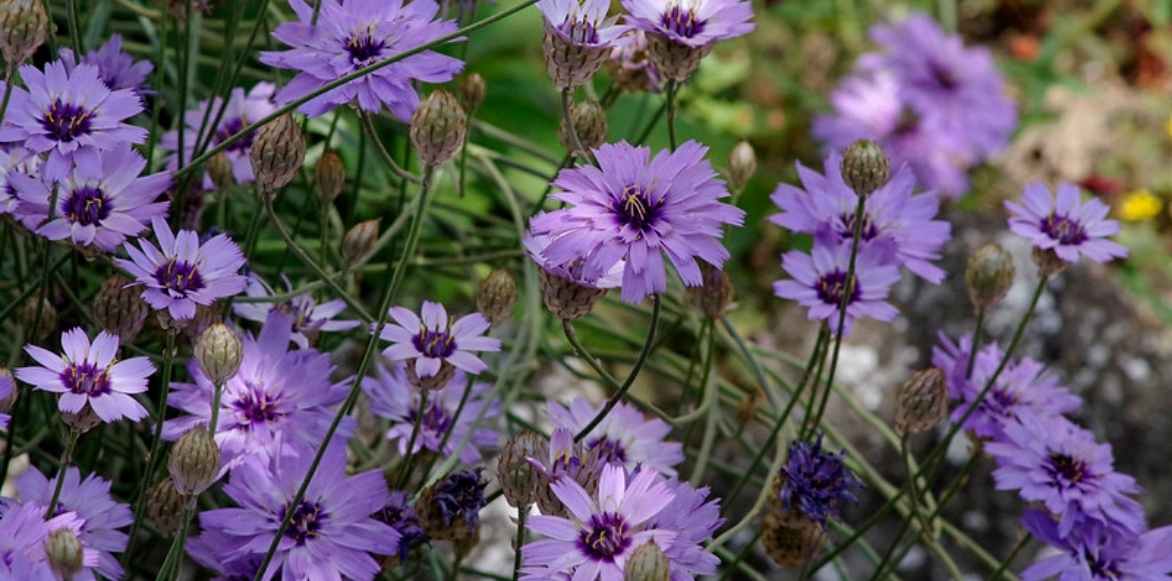
Catananche is a beautiful, easy-to-care-for perennial (Photo: D. Jolivet)
Multiplying Catananche
Catananche is a robust and easy perennial, but its lifespan is often limited to a few years. Propagation allows you to keep it longer or to plant it elsewhere in the garden. Although it is possible to propagate the roots in winter, the simplest methods remain clump division or sowing, to be done in spring.
Dividing Catananche
- If possible, water your plant the day before you plan to divide it.
- Dig up the plant to divide it using a spade, cutting around the foliage and ensuring to keep as much soil and roots as possible.
- Using your spade (well-sharpened) or a sharp knife, cut into two or more sections.
- Replant the sections in the desired location and then water.
Sowing Catananche in situ
In light, well-drained soil, Catananche self-seeds, but you can also sow it yourself. For in situ sowing, do this around April.
- Choose a clear, sunny spot.
- Weed carefully, then loosen the soil.
- Rake to provide a fine, level surface for the seeds.
- Sow, spacing the seeds adequately, then cover with light compost.
- Lightly firm down, then water with a fine spray to avoid displacing the seeds.
- If seasonal rains are scarce, water again occasionally to keep the soil moist but not waterlogged.
- When the first true leaves appear, thin out by removing the weakest plants, keeping about one every 30 cm.
- Once the plants are a few centimetres tall, you can either leave them in place or transplant them to where you want them to flower.
Sowing in trays, under cover
Sowing in trays should be done about 6 to 8 weeks before the last spring frosts.
- Fill a tray with seed compost (low in nutrients) and slightly moist.
- Sow your seeds in rows, spacing them adequately.
- Cover with a few millimetres of compost, then lightly firm down and water with a fine spray (using a misting bottle, for example).
- Place your tray in a bright location, at a temperature of around 18 to 24°C, and ensure the substrate remains moist but not waterlogged. Germination takes about 3 weeks.
- When the first leaves appear, thin out by keeping only the healthiest plants.
- When they are a few centimetres tall, transplant them into individual pots, and keep them under cover, while continuing to monitor the moisture of the substrate.
- 15 days before final planting, harden off your plants by gradually exposing them to outdoor air for longer each day.
- In May, the plants can be planted in their final location.
Associating Catananche with the garden
Catananche is an undemanding plant that thrives in well-drained, even dry soils, and full sun, although it can also adapt to heavier, richer ground, where its lifespan is, however, shorter. A lover of limestone, it can also grow in neutral or slightly acidic soil.
This adaptability allows for the combination of its long and beautiful summer flowering, in shades of blue or white, with numerous companions.
Highlight the blue or lavender flowering varieties by pairing them with golden-leaved bushes, such as the Cotinus ‘Golden Lady’ if your soil is limestone, or a Ceanothus ‘African Queen’ in more acidic soil.
The flowering of Catananche also pairs very well with grey or silver foliage, such as that of Santolines, Lavenders, Artemisias, or even Perovskias.
The light and fine foliage of grasses also makes good companions for Catananche, such as the blue-tinged foliage of a Fescue. The rigidity of Catananche’s flower stems can also be softened by the presence of Angel Hair, whose lightness is accentuated by the slightest breeze.
For a naturalistic effect, play with complementary flowerings, selecting equally easy perennials, such as Lychnis coronaria, Buenos Aires Verbenas, Gauras, Evening Primroses, or even Scabious. A few clumps of Erigerons, with their very long flowering, or Stachys byzantina, with its grey, downy foliage, can complete the scene.
The small flowers of Catananche can also gracefully accompany the flowering of roses, bringing in the blue tones that are absent from the queen of flowers.
Finally, focus on bulbs by selecting those that flower early, which add colour before the flowering of Catananche, or by complementing it with ornamental alliums, which raise their fluffy heads at the same time as their neighbours.
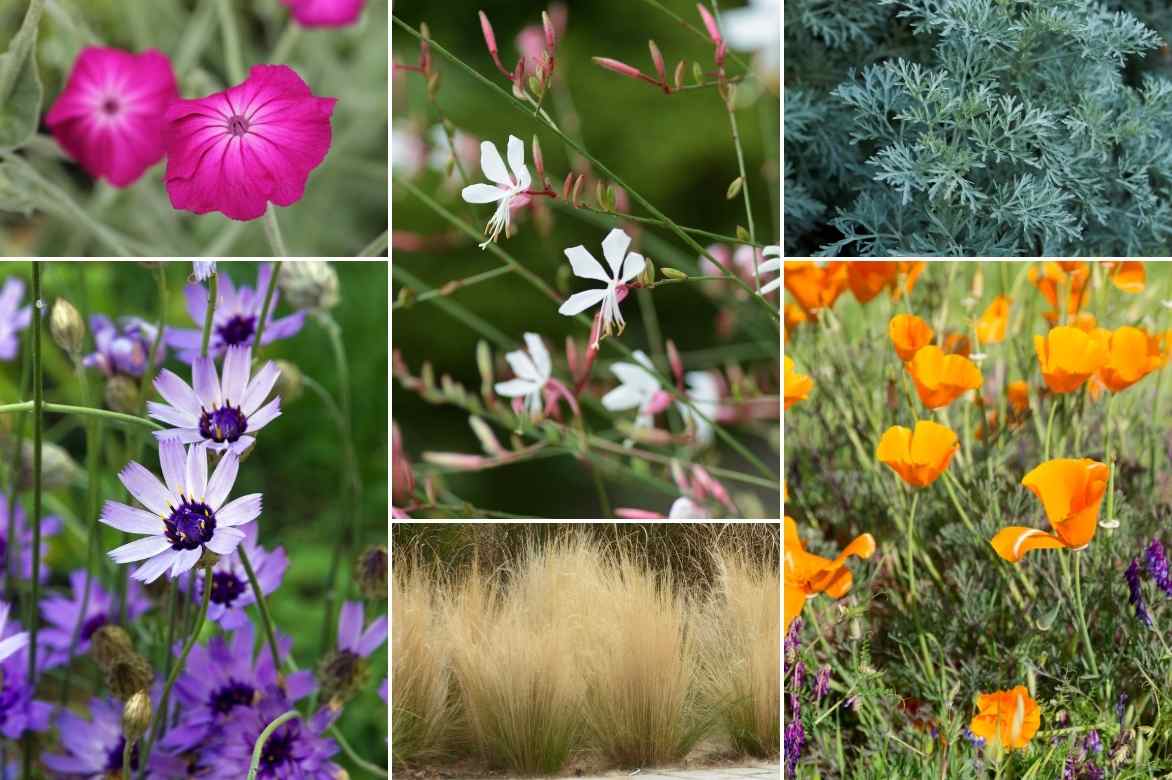
Catananche caerulea looks stunning alongside airy and natural flowerings: Lychnis coronaria, Gaura, California Poppy, and blue-tinged foliage or grasses (here Stipa tenuifolia and Artemisia)
→ Discover more pairing ideas with Catananche
Useful resources
- Find our different varieties of Catananche in our online nursery.
- Subscribe!
- Contents




































Comments